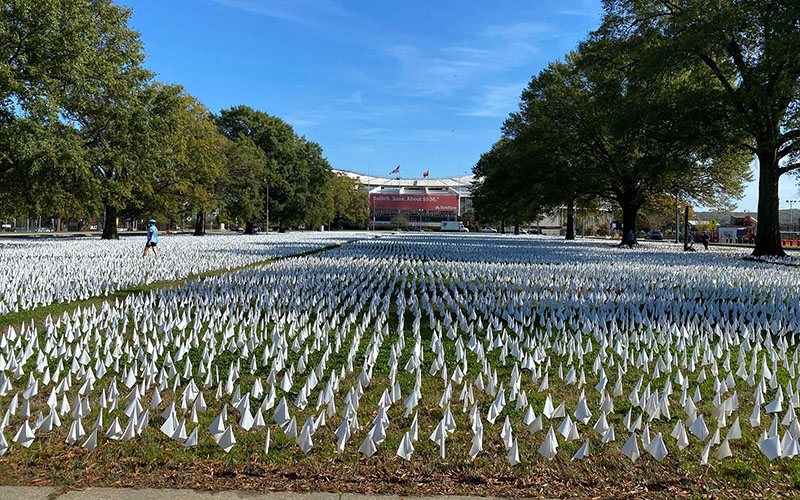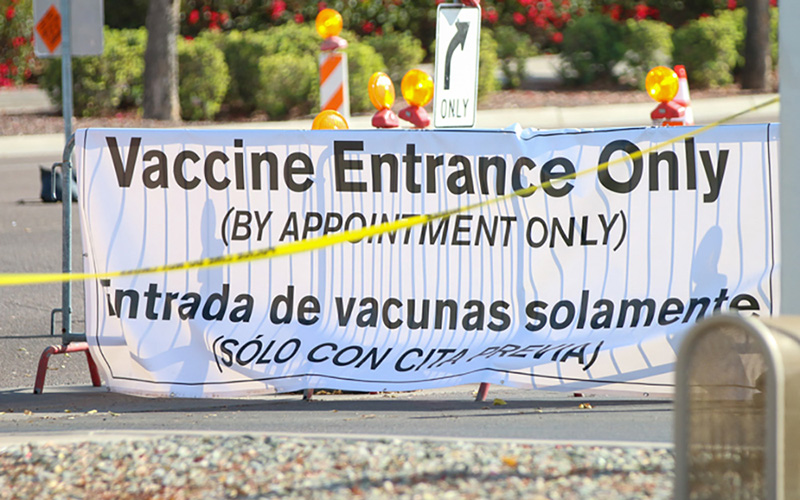WASHINGTON – Total deaths in Arizona rose 25% in 2020 over the previous year, with some counties seeing increases approaching 50% for the year in which COVID-19 became the leading killer in the state.
While data on the causes of death is not expected until later this year, experts attribute the “exceptional increase” in deaths to the COVID-19 pandemic as well as to fatalities that may be indirectly caused by the pandemic.
“COVID appears to be the reason,” said David Sklar, a professor at Arizona State University’s College of Health Solutions. “Other problems have also increased, such as opioid-related deaths, and some have decreased, such as pedestrian-related deaths because people were driving less and were out less. But COVID has been a large contributor to our increase.”
The Arizona Department of Health Services reported this month that there were 75,133 deaths in the state in 2020, an increase of 24.9% from the 60,161 deaths reported in 2019.
Holly Poynter, a spokesperson for the state health department, said while it’s likely “COVID-19 deaths are a factor” in the increase in deaths, state officials will not be able to say for sure until complete data on cause of death is available later this year.
The increased death toll was not spread evenly across the state, with Apache and Yuma counties reporting increases of 48.9% and 48.8%, respectively. On the other end of the spectrum, deaths increased by 14.29% in Greenlee County and 16.2% in Cochise County.
In Apache County, where the total number of deaths rose from 734 in 2019 to 1,093 in 2020, county Health Director Preston Raban said COVID-19 was a driving force, but not the only factor in the increased deaths.
“If you put it down on paper, there was X amount of COVID deaths and then Y amount of regular deaths and so they were a contributing factor,” Raban said. “But there was as many other deaths to really make you raise your eyebrow and say, ‘Wow I wonder … 2020 was an interesting year.'”
Yuma County Communications Director Kevin Tunell was busy helping the county “in full vaccine mode” Wednesday and was not available for an interview. But he did say that “it’s a fair stretch that COVID has had a large part in the number” of increased deaths in the county last year.
The report on the increase in deaths comes as COVID-19 surpassed cancer and heart disease to become the leading cause of death in Arizona last year. And Arizona is not the only state seeing such surges, said Justin Lessler, an associate professor of epidemiology at Johns Hopkins University’s Bloomberg School of Public Health.
Lessler said 25% is “really an exceptional increase” that comes “because we have this new cause of death that … killed in the last year as many people as all but two other causes of death,” Lessler said. “Only heart disease and cancer killed more people than COVID last year and it’s almost up to the level that heart disease would kill in a normal year.”
Lessler echoed others who said COVID-19 was not just a killer itself but may have contributed to other deaths in 2020.
“I could have heart disease and maybe I would have some chance of dying in the next few years,” Lessler said as one example. “It was greater than the people around me, but because I got COVID, and had that heart disease made it more severe. So I die.”
Lessler pointed to the possibility of a “more ancillary effect” from the pandemic, such as the social pressure of lockdowns leading to increases in overdose or suicide deaths, or overburdened hospitals being unable to deliver needed, and possibly life-saving, care to patients.
Raban added that “in some instances, those who had the COVID virus died with COVID on board, but it wasn’t necessarily the COVID virus that killed them.”
Jeffrey Engel, the Council of State and Territorial Epidemiologists’ senior adviser for the COVID-19 response, said what Arizona saw last year “may be typical,” but that it could have been felt more acutely in the state because of the relatively large number of seniors in the state.
People 65 and older accounted for 9,573 of the 12,819 COVID-19 deaths in Arizona, or 75% of the total, according to the latest data from the state health department.
“I think after this is over, this pandemic is over, we as a society will be looking ourselves in the mirror and really try to ask how we take care of our elderly,” Engel said.
For the time being, he said, it’s important that people not get numb to the rising numbers.
“There is a person behind all of them,” he said.



